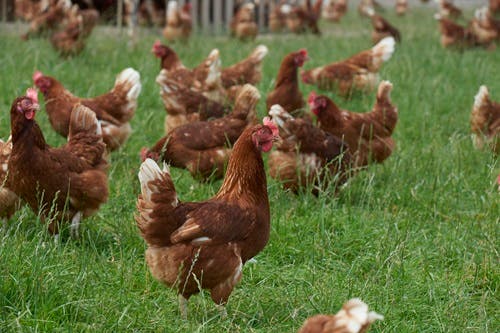The True Cost of Salmonella and why you should not cut corners
Salmonella in poultry remains a significant threat, impacting not just food safety and human health but also the financial viability of farms. With Salmonella control being such an important aspect of any food safety programme, understanding the true cost of an outbreak and implementing robust preventative measures is crucial.
The UK egg industry has made significant strides in food safety over the past three decades. The high standards maintained by egg producers, along with the stringent guidelines of the Lion Code of Practice, have dramatically reduced the risk of Salmonella in laying hens and contributed to the exceptional food safety record enjoyed by the UK.
As consumers increasingly recognise the nutritional value of eggs, the importance of upholding and continually improving Salmonella control measures has only intensified.
The Hidden Costs of Salmonella
While most birds infected with Salmonella show no signs of illness, Salmonella in poultry poses a substantial risk to human health, particularly to vulnerable groups. Salmonella is responsible for roughly half of all global foodborne disease outbreaks requiring hospitalisation1 and leads to approximately 59,000 deaths each year2.
For egg producers, a Salmonella outbreak can be financially devastating. The estimated cost of a Salmonella outbreak in free-range birds in the UK can reach up to £17 per bird3. This figure encompasses various expenses, including the cost of replacing infected flocks, lost income from decreased egg production, and the substantial costs associated with cleaning and disinfection. For a typical farm with tens of thousands of birds, these costs can quickly escalate.

The financial strain is further compounded by the increasing length of commercial laying bird cycles. If an outbreak occurs early in a cycle, it can take a long time for replacement pullets to become available, further delaying the resumption of normal operations and amplifying financial losses.
The Importance of Poultry Salmonella Prevention
Given the substantial financial risks associated with a Salmonella outbreak, a proactive approach to poultry Salmonella prevention becomes essential. The potential financial fallout and reputational damage caused by an outbreak far outweigh any marginal savings achieved through reduced preventative measures.
Best Practices for Salmonella Control
A comprehensive food safety programme is essential for effective Salmonella control on poultry farms. This involves a multi-pronged approach combining biosecurity, monitoring, and vaccination. Biosecurity in laying hens focuses on minimising the risk of Salmonella entering the farm environment. Key biosecurity measures include strict rodent control to prevent the spread of infection, as well as thorough cleaning and disinfection protocols between flocks.
Regular monitoring is another crucial aspect of a robust Salmonella control programme. This involves mandatory routine Salmonella testing coupled with consistent on-farm surveillance for potential risks. Early detection of potential issues allows for prompt intervention, preventing minor problems from escalating into major outbreaks.
Poultry vaccination plays a key role in comprehensive Salmonella control strategies. The UK stands out as the only country with mandatory vaccination for both Salmonella Enteritidis (SE) and Salmonella Typhimurium (ST) – the two regulated strains of Salmonella in layers. While several poultry vaccines are available, AviPro™ Salmonella Duo, with its dual-strain coverage in a single dose, provides a practical and highly effective solution. This dual-strain vaccine offers superior direct protection from day one, simplifying vaccination protocols for producers1.
When making decisions about chicken vaccination programmes, it’s crucial for layer producers to also be aware of potential complications arising from differentiation testing. Certain vaccines can grow on the culture plates used in routine Salmonella tests. A positive result on these plates can necessitate further testing to ascertain whether the Salmonella present is the vaccine strain or a pathogenic field strain. This additional testing adds complexity, cost, and potential delays to farm operations. Selecting a vaccine that doesn’t require differentiation testing can significantly streamline the process, offering both economic and time-saving advantages.
Maintaining High Standards
The UK boasts one of the lowest Salmonella prevalences in Europe. This hard-won success underscores the effectiveness of the current control strategies and the importance of avoiding complacency. Continued vigilance is essential to maintain the UK's leading position in Salmonella control and to protect human health. By prioritising a holistic approach to food safety, the UK poultry industry can continue to produce Salmonella-free eggs.
Learn more about Salmonella control below:
- EFSA Journal 2021. The European Union One Health 2019 Zoonoses Report. EFSA Journal;19(2):6406
- WHO Estimates of the Global Burden of Foodborne Diseases 2007-2015. https://apps.who.int/iris/bitstream/ handle/10665/199350/9789241565165_eng.pdf.
- Elanco Market Research Cost of a Salmonella Outbreak 2023 Free Range 320000 – Scrutton Bland 2023 (v1.0)
- AviPro Salmonella Duo Summary of Product Characteristics compared to 2 other SE live vaccines